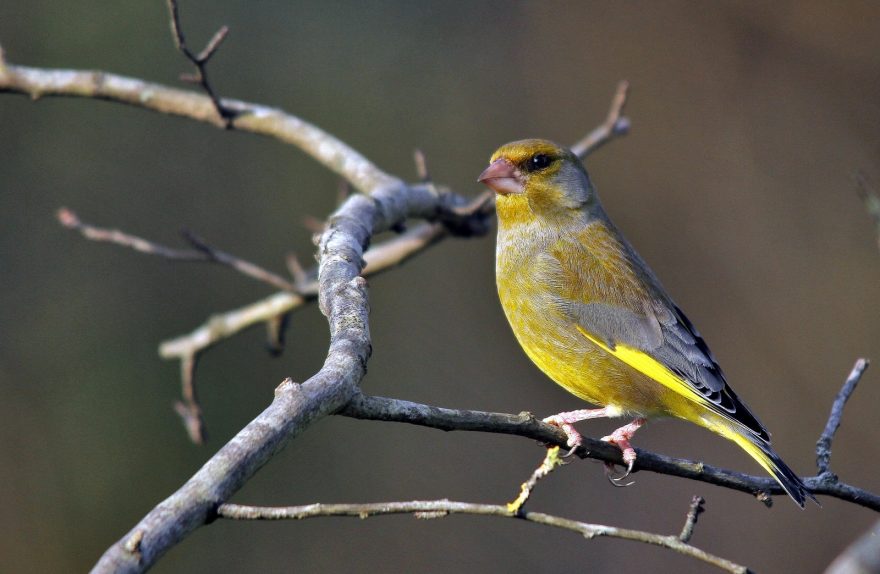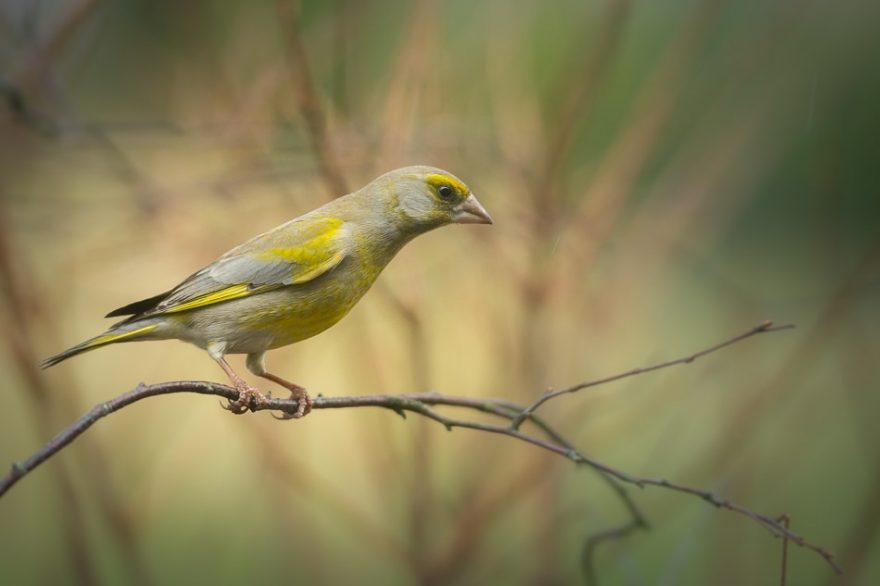The European greenfinch is a small songbird commonly found throughout Europe. Feral populations also exist in Australia and New Zealand. They are not overly popular as aviary birds, however those wishing to keep them can generally acquire a pair for a low cost. They are known to be excellent singers.

Housing & Compatibility
European greenfinches can be kept and bred in canary-style cages. Aviculture Hub does not encourage birds to be kept and bred in cages, so this article will focus on housing greenfinches in aviaries.
Their ideal environment is a large well planted aviary. Greenfinches are destructive to foliage, so a careful balance between the number of birds and the growth rate of plants must be achieved. Their preferred nesting location is a shrub or dry bush well above ground level.
Greenfinches are best housed as single pairs in a mixed collection. They are a larger finch and can be aggressive, especially to smaller birds. They can be successfully housed with larger finches, doves, quail and Neophema parrots.
They can be boisterous and stress other birds in confined spaces, so it’s important that the aviary is large enough that birds are able to get a reasonable distance away from one another when necessary. European greenfinches housed with Canaries, siskins, chaffinches, linnets, goldifnches, twites and redpols will produce hybrids. Most hybrids are infertile.
Breeding & Reproduction
European greenfinches breed in the milder spring and autumn months. They will construct a cup shaped nest in a shrub, dry brush or a commercial canary-style nest using grass and feathers. They prefer to build at a medium-high position in the aviary and will be reuse the same nest for subsequent clutches.
A hen will produce 2 to 3 clutches per year, after which nests should be removed to prevent over-breeding. Clutches consist of between 3 and 6 eggs – with good hatch rates. The hen will incubate the eggs for 13 to 14 days, with only minimal assistance from the cock. Young birds will fledge at three weeks of age and be fully independent at six weeks of age.
Nest inspections are reasonably well tolerated. Furthermore, it is generally safe to leave the young birds with their parents after they become independent – but only in an aviary situation.
Sexing
Hens are somewhat duller than cocks. Then female’s feathers are closer to grey and brown than to the male’s yellow and green. Females are also generally smaller than males.

Diet & Feeding
A quality seed mix containing canary seed, various millets and panicum forms the basis of the European greenfinch’s diet. Fresh green seeds are more nutritional than dried seed. Sprouting dry seed increases the nutritional value of seed and is a cheap way to improve your birds health. Seeds lack many essential vitamins and minerals which must be compensated for by offering other foods.
Some leafy green should be provided throughout the year. Kale, bok choy, endive and silverbeet are the most nutritious and will be readily eaten. Spinach can also be given, but only sparingly as it can contribute to calcium deficiency.
Live food is not an essential part of the greenfinch’s diet, but can be offered for an extra nutritional boost – especially during the breeding season. Mealworms are most commonly offered, but maggots, termites, and small crickets will also be consumed readily. Commercial soft finch food mixes and ‘egg & biscuit’ mixes can also be offered to improve breeding success.
Do not feed anything from the list of forbidden foods.
Trapped Birds
In areas where the European greenfinch has been introduced, it may be possible to legally purchase wild-trapped birds for a lower price than aviary-raised birds. Trapped birds can take a significant amount of time to “calm down” enough to be successfully bred in an aviary and will generally not adapt to a cage.
Wild caught birds often suffer high rates of mortality due to stress, parasites and disease. Newly acquired birds should be isolated from other birds for at least six months and treated with preventative medications. Gizzard worm, scaly leg mites, air sac mites and megabacteria are known to affect feral populations in Australia and New Zealand.
Health
Generally a hardy bird, however a preventative worming and parasite control regime should be implemented to ensure their long-term health. They seem to be particularly susceptible to protozoal infection, so strict quarantining of new birds is essential.
Healthy birds can be expected to live for approximately 7 to 10 years of age.
Hi all,
I recently purchased a 9month old green singer, 3days of having it, it seems like somthing wrong
Doesnt fly well, doesnt chirp, and looks small which iv compared to other green singers in web search also the colors of my green singer are not that vibrant, is there somthing wrong with it? It drinks and eats well, i give it a 50/50 canary finch seed good quality mix, also mixed sulfa 3 to hes water.